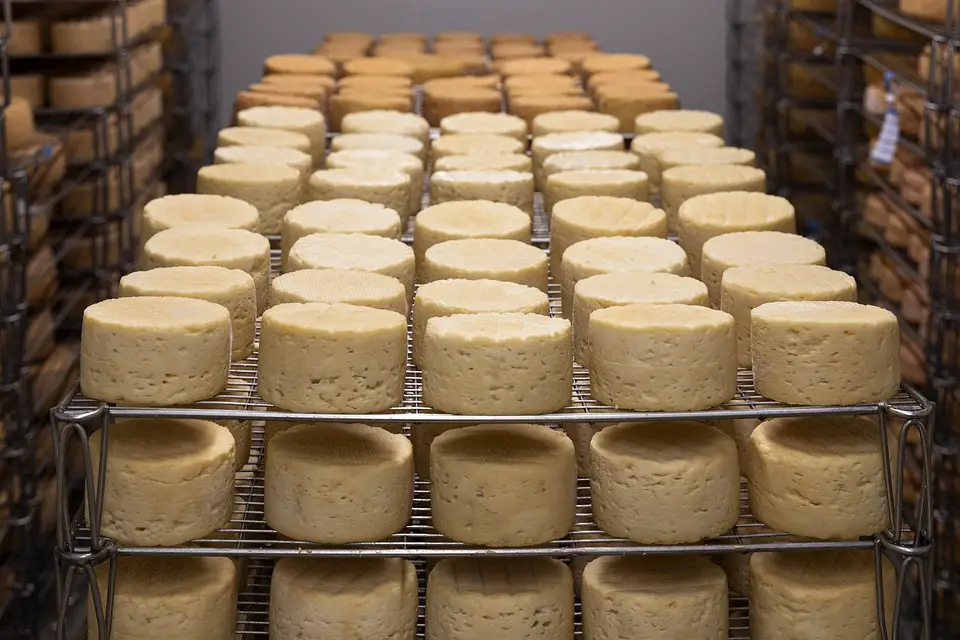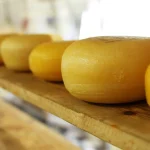As Morski writes, in Italy, this rate stands at 4%, in France 5.5%, in Germany 7%, while in this country, VAT on cheese is a whopping 25%. That is why Pag cheese producers and small dairy farms have sent a request to the Croatian Government in which they’re asking for a reduction in what they consider to be too high value-added tax rates. If that happens, the consumption of cheese would increase, and its price for the end consumer would also be lower.
Without tax relief, the business outlook for cheesemakers doesn’t look great.
”The Association of Pag Cheese Producers, together with the Association of Croatian Small Dairies, has decided to initiate a request to reduce VAT on cheese and dairy products. Croatia has the highest VAT rate on cheese and dairy products of all EU member states. Just for comparison, in Slovenia, the VAT rate is 9.5%, in Italy and Spain it is 4%, in Ireland the VAT rate is 0%,” said Martina Pernar Skunca, president of the Pag Cheese Producers Association.
”We propose a VAT rate of 0-5%, so we also accept 5% as a kind of normal VAT rate for dairy products,” said Sime Gligora, the director of the Gligora cheese factory.
”What’s illogical is that the VAT on milk is 5% and the state subsidises milk production and encourages it, while on the other hand, the VAT on cheese and dairy products is so high,” added Pernar Skunca.
I’m tired of the barren bureaucracy, of all of these piles of paper. Most of this could be reduced, simplified, arranged to be simpler, to be easier. A big problem is created by VAT, which takes most of the income for itself. It’s clear to all of us that the state also has to live on something and those institutions that are also at our service, don’t get us wrong, but I think that this industry should be protected not only on the island of Pag, but across the whole of Croatia because it’s now on the verge of extinction,” said Sime Pernjak, the co-owner of a cheese factory.
This summer’s drought has also left unfavourable consequences. The sheep which graze Pag did not find enough food, so the livestock had to be supplemented, and compared to last year, the costs have doubled.
”From the very start when it comes to livestock, feed prices rose. Fodder rose because artificial fertiliser rose. Fertilizer prices have risen due to energy costs. And therefore the price of milk has also shot up. So, the price of milk is 50% higher than it was last year. Energy prices went up, electricity is three times more expensive, gas is twice as expensive, and the costs of packaging, cardboard, foils all went up,” said Gligora.
It can’t get any worse, Pag cheese producers have warned, aware that they cannot replace the increase in input costs with a higher price of cheese.
”The big thing is that we buy milk with 5% VAT, and the output VAT is 25%. The maths here is crystal clear,” said Pernjak.
”By reducing the VAT rate on cheese and dairy products, our products would be more competitive on the market, their consumption would increase, and this would be good for everyone because there would be a greater inflow into the state coffers. So we believe that in these difficult conditions on the market and in this situation when everything has become more expensive – both raw materials and energy products – that it is really necessary to reduce VAT because it is the highest in all of Europe. As for Pag cheese, it is a premium product, and the point is that dairy farmers on the island of Pag don’t live only on Pag cheese. We also have goats, we buy significant quantities of cow’s milk from Croatia and goat’s milk which also comes from Croatia. The price of hard cheeses has increased. We’ve minimally increased our prices. All hard cheeses are more expensive products and you simply have to make a compromise so as not to lose customers. Up to a certain point you can suffer at the expense of your own margins, but then there comes a point where you can’t do that. If the dairies aren’t operating well, who will pay the farmers for milk but the dairies?” added Pernar Skunca.
”We bring in milk from Lika, Zagorje, Slavonia, Istria…” noted Pernjak.
”What is very important is that we’re the biggest purchasers of cow’s, goat’s and sheep’s milk and, unlike other dairies, we produce the most products that have this high VAT,” added Pernar Skunca. That’s why only with a lower VAT rate can we overcome this never-worse time for cheesemakers, they explained from the Association of Pag Cheese Producers – now they are already worried about their jobs but also the preservation of the centuries-old tradition of cheesemaking on the island, writes HRT.
For more, make sure to check out our dedicated business section.










